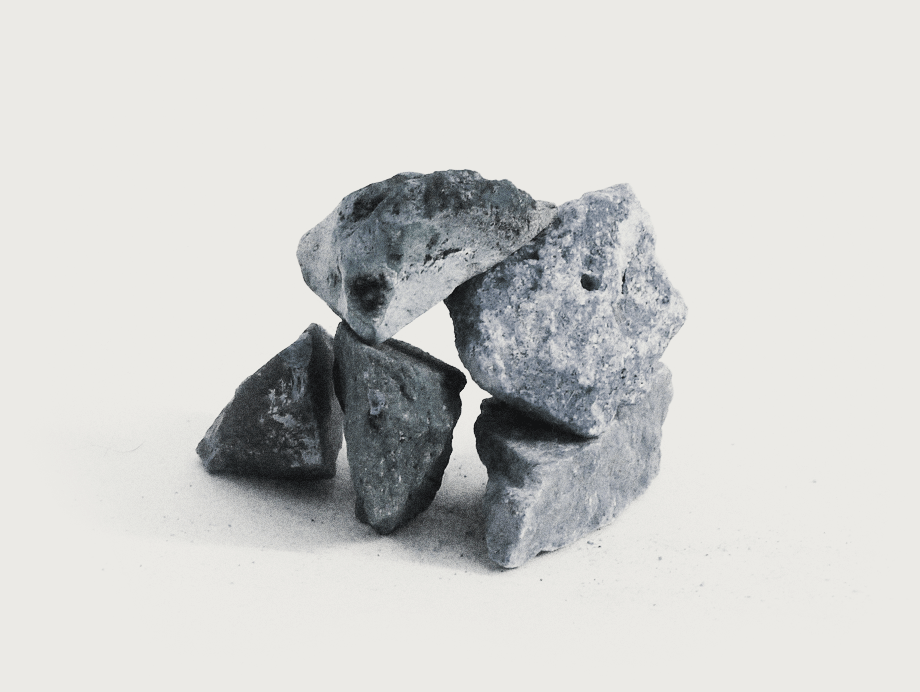ALAN -T.) / Pierre Jodlowski

Project
Chamber Opera
for one singer, two actors, chamber ensemble and audiovisual setup
conception, music: Pierre Jodlowski
musicians of the CAIRN ensemble
artistic collaboration: Jérôme Combier
libretto: n/a
direction: n/a
Prologue
- Hello
- Hello
- What’s your name?
- I don’t know.
- You don’t know?
- Yes, I do!
Origins
On Christmas Day, 25 December 2013, I was sitting in an airplane leafing distractedly through the pages of “Le Monde.” My attention was drawn to a short snippet about Alan Turing, where it was announced that the previous day, 24 December, the English Queen granted a public and posthumous pardon to the mathematician. Having admitted publicly to having had homosexual relations, Turing was forced to undergo chemical castration in 1952, as homosexuality constituted a crime in England. Reading the article led me to ask myself about what became of this exceptional individual and about his relations with the public community. Contrasted with the sheer density and historical importance of his work were an absence of recognition followed by his exclusion through a decision of justice, which led to his suicide in 1954. Turing appears as one of the tragic figures of the 20th century: one of its greatest contributors in the name of scientific progress, and yet a victim of obscure forces, marginalised through intolerance.
Programme
Operatic Structure
The mechanisms underpinning the writing of an operatic project can draw on a variety of paradigms, whether they be conceptual, literary, philosophical, or simply narrative. The figure of Alan Turing, as the subject of an opera, interests me particularly because of the intrinsically twofold nature of his story. This person could not be represented, narrated, or even expressed solely through either the story of his discoveries (as exciting as they are) or his tragic destiny alone (at the risk of presenting an over-simplified story of victimisation). Instead, it is both of these threads of a complex life that together can form the basis of an approach, which need to be complex in order to stimulate thinking and widen concepts, within this work.
In the end, was Turing’s marginality not fundamentally linked to his genius? And although this marginality was later accepted, or at least pardoned by the Queen of England, can we not still see, right under our noses, constant expressions of lifestyles that we continue to marginalise or even actively repress under the banner of well-meaning morality of modern civilisation?
Alan T.) aims to evoke a figure both historical and symbolic, through a non-linear journey whose narration, handled by a contemporary author, moves from exterior to interior. Thus, when we talk about the ENIGMA machine, an encrypting system used by the Nazis, and the fact that Turing was able to invent a machine capable of breaking these codes, we can speak here of lies, of a machine as a mechanised instrument of transformation, which makes us lose touch with a certain idea of reality. For his astonishing play about Turing and Hannah Arendt*, the director, Jean-François Peyret, refers to his work as “a play whose only ambition is to be a (modest) litany of the inhumanity of this century.”
This opera project has a similar ambition insofar as it uses Alan Turing’s ambivalence as an opening into a thought process about past, present, and future shifts in our states of consciousness.
The musical project uses a number of elements taken from the world of the mathematician that are favourable to the development of ideas, in particular a constant investigation into the question of sound transformation within a formal dynamic (temporal conduit). Similarly, the principle of transformation is also at work when we look at amplified and spatialized instrumental writing requiring specific handling that defines a different reality. One of these strands of work also relies on the notion of rhythmic interpolation through application of encrypting techniques. Here, the idea is to develop rhythmic cells through successive simplification or complexification, relying directly on the algorithmic methods that Turing was instrumental in developing.
The three voices required for the project make up a symbolic trio: “man, woman, avatar (machine),” a group which matches the composition of players from the renowned Turing Test. Moreover, with the interlacing of singing and spoken word, we see a desire to extend the word into multiple territories. Singing, which is particularly concerned by the notion of vocal encrypting and the capacity of digital voices to move us (or not), can inhabit, it would seem, this ambiguous area of elusive yet pertinent words, in another area than that of meaning.
* Histoire Naturelle de l'esprit, Jean-François Peyret, 2000
dramaturgical elements
ENIGMA
The ENIGMA machine was an apparatus used by the Nazi regime to encrypt military messages. Alan Turing and his teams are credited with creating a machine capable of decrypting these messages, which, according to Churchill himself, accelerated the end of the second world war by two years.
The notion of encrypting, enacted here through a system of real-time voice modification, seems to me as particularly interesting as a scenic object. For this, we build a device which can materialise the encryption process: a voice box that transforms words, changing their spectral and semantic nature. Encrypting in daily life is omnipresent and routinely used every day by sections of the police, secret services, and political and data networks. The audio results (see annexes) of analogue or digital vocal encryption produce a particularly stimulating perceptive reaction: their unintelligible aspect creates an ambiguity that effectively makes it hard to be certain about their human origin.
dramaturgical elements
THE KNIGHT’S TOUR PROBLEM (OR THE KNIGHT’S POLYGRAPH)
Having already worked in depth on the world of the writer, Georges Perec, I learned to my delight that the famous “knight’s tour problem” (whereby a path must be found to move the knight’s piece over every square of a chess board without landing twice on the same square – a method used by Perec to define the chapter headings on his book “La vie mode d'emploi” [Life a User’s Manual]) was not unrelated to Turing’s discoveries about “thinking” machines. In the year 840, the Arab chess player and theorist, al-Adli ar-Rumi, already provided a theoretical approach; it was reworked and developed by Pierre Rémond de Montmort in his early 18th century “Essay d'analyse sur les jeux de hazard” (“Analytic Essay on Games of Chance”) and followed by Abraham de Moivre, who, in 1718, published a work entitled “La théorie du hazard” (“The Doctrine of Chances”), which was a precursor to research into laws of probability. It was the studies on these laws and their development that led Turing to establishing operating systems (machines) capable of making “intelligent” decisions, the most important point being the integration of the concept of memory. A machine can be said to have this capacity if it is able to base its decision-making on previous results it can recall.
Here as well, we can imagine how a scenic space can handle these concepts and integrate them into elements of the set as well as into the process of musical writing. The complexity of formalism in mathematics derives mainly from the fact that it is a highly specialised language, one that remains largely inaccessible to those without specific knowledge. Nonetheless, the accumulation of equations, curves, laws, axioms, and theorems makes for very dense and head-spinning matter that could easily find resonance within the plastic, musical, and semantic universe of the opera.
dramaturgical elements
THE TURING TEST
As we know, Alan Turing is in a way the father of artificial intelligence. Convinced that machines could be able to think on their own, he came up with fundamental algorithmic structures, which form the basis of information technology today. One of his most interesting contributions consisted of devising a test linking together three individuals: two humans and one machine. The principle of the test is as follows: one of the two humans asks questions to one of the two others and determine if he/she is talking to a human or a machine. Since the 1950s, companies developing artificial intelligence regularly apply this test or principles derived from it. Today, of course, artificial intelligence is constantly employed within semi-autonomous systems, but the ultimate decision-making power still remains in the hands of qualified individuals. The theme runs abundantly through science fiction, in particular in the work of the American author, Philip K. Dick, who, in “Do Androids Dream of Electric Sheep?” actually uses a derivative of a Turing Test in the action in order to identify machines through their emotional responses.
This sequence, brought to the screen by Ridley Scott in his film “Blade Runner,” exemplifies all the characteristics of an operatic act, with extremely dense tension, strong dramaturgy relying on the outcome of the test, and of course, an extended dimension for deeper reflection. Effectively, in contemporary society, where computers are now quite seriously and exponentially beginning to extend human physical capability, we might consider the Turing Test under a somewhat different light: the question here would no longer be to differentiate humans from machines, but rather to identify the percentage of machine that has already worked its way into the human, developing fresh behavioural characteristics along the way…
ALAN TURING
biographical highlights
Born in 1912
Youth: brilliant studies, predilection for mathematics; within a puritanical English context, his aptitudes are not particularly encouraged by his professors; he becomes interested in Einstein and his questioning of Euclidean and Newtonian laws of physics.
University: studies logic, central limit theorem, problem of decision orders, question of probabilities (De Moivre and Laplace); calls his faith into question (he becomes atheist) after the death of one of his friends; meets Wittgenstein (deep disagreements over the concept of truth).
Practices running. From 1938, joins a department of British Intelligence; participates on research to crack the ENIGMA code used by the Nazis. Develops several machine prototypes and designs a model capable of encoding the human voice.
After the war, continues work on machines and logic systems; puts together several projects that are resisted by institutions and reservations held about him; makes a foray into the field of biology but continues his work on the foundations of artificial intelligence; in 1950, publishes a summary article on his research, “Computing Machinery and Intelligence.” It is at this time that he admits his homosexuality.
Turing was implicated in a trial relating to his private life and sexual orientation, which he never denied. Against the background of the cold war, he is found guilty by the British courts and sentenced to chemical castration. He was excluded from scientific circles and the psychological consequences of the treatment he received led him to deep isolation.
Turing was found poisoned at his home in 1954. A half-eaten apple was allegedly found by his side, which became legendary. Some saw in this the origins of the Apple Computer logo… One of Turing’s favourite films was “Snow White.”
In December 2013, Queen Elizabeth II signed a pardon for Turing's conviction for gross indecency, with immediate effect.
Intolerance ENIGMA Homophobia Lies Decisions Encrypting Machine Black Matter Test Power Intelligence Suicide Variables Memory Process Formalism Treatments Instant…
Pierre Jodlowski - composer
Pierre Jodlowski develops his work in France and abroad in the field of “music of today.” His music, often richly dense, is situated at the crossroads of acoustic and electric sound and is characterised by its dramaturgical and political overtones. His activities have led his music to be played in most of the well-known venues dedicated to contemporary music as well as on parallel circuits: dance, theatre, plastic arts, and electronic music. He is also the founder and associate artistic director of the studio éOle - in résidence at the Odyssud Blagnac since 1998 – and of the festival Novelum in the Toulouse region.
His work can be encountered today in many domains; outside of the musical world, he works on imagery, interactive programming for installations, and stage direction, and he is constantly looking for ways to question the dynamic relations of scenic spaces. Today he asserts the practice of “active” music: in its physical dimension [gestures, energy, spaces] as having a psychological effect [evocation, memory, cinematographic dimension]. In parallel to his work as composer, he also performs, solo or in formations with other artists.
With his projects, he has notably worked with: the Intercontemporain ensembles, Ictus - Belgium, KNM – Berlin, Les Éléments Chamber Choir, the Ensemble Orchestral Contemporain, the Nouvel Ensemble Moderne of Montreal, Ars Nova in Sweden, Proxima Centauri, the Court-Circuit Ensemble as well as many solists on the international musical scene. He has a close working relationship with musicians such as Jean Geoffroy – percussion, Cédric Jullion – flute, Wilhem Latchoumia – piano, for work and research into new stringed instruments. He has played recently in a trio with Roland Auzet (percussion) and Michel Portal (bass clarinet), and with the drummer, Alex Babel, and other artists from the world of improvised music. His work on imagery has led him to develop working relations with plastic artists such as Vincent Meyer, David Coste and Alain Josseau. He has also worked with the stage designer, Christophe Bergon, on a multitude of projects at the crossroads of theatre, installation, concert, and oratorio. He has received commissions from IRCAM, the Ensemble Intercontemporain, the French Ministry of Culture, CIRM, GRM, the Donaueschingen festival, the Toulouse Cinémathèque, Radio France, the Concours de Piano d’Orléans, the Aujourd’hui Musiques festival, the GMEM, the GRAME, the SIEMENS Foundation, the Théâtre National du Capitole in Toulouse, the European project INTEGRA, the EMS studio - Stockholm, the Royaumont Foundation, the Cabaret Contemporain, and the Venice Biennale…
Winner of several international competitions, he was awarded the Prix Claude Arrieu (2002) and the Prix Hervé Dugardin (2012) by the SACEM. He was invited to residency at the Berlin Arts Academy in 2003 and 2004. From 2009-11, he was associate composer in residence at the Odyssud Cultural Centre in Blagnac, near Toulouse [initiated and supported by the SACEM and the Ministry of Culture]. In 2012, he was selected for the Prix des Lycéens, awarded for contemporary music records, and in 2013 he received a prize from the Academie Charles Cros for his album “Jour 54” published by Radio France.
His work is widely performed and he himself performs in the main venues dedicated to contemporary audio arts in France, around Europe, Canada, China, Japan, Taiwan, and the United States.
His works are in part published by Éditions Jobert and video and audio recordings are published through the labels éOle - Records and Kaïros. He is currently living between France and Poland.












